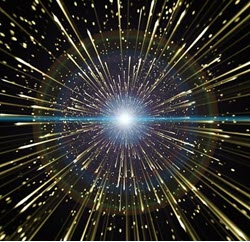The history of the word ‘kaiju’ can be traced back to its Japanese roots and the impact of World War II, leading to the birth of the iconic monster Godzilla. Emerging from the aftermath of the war as a symbol of nuclear destruction, Godzilla captured the imaginations of audiences worldwide and paved the way for a new era of monster movies.
In the early 1950s, Japan was grappling with the trauma of Hiroshima and Nagasaki and the ongoing fear of nuclear war. It was against this backdrop that the idea for Godzilla was born. The monster was created as a metaphor for the horrors of nuclear weapons, a creature mutated and empowered by radiation, wreaking havoc on Tokyo and its people. Godzilla represented the consequences of humanity’s reckless pursuit of power and the need to confront the destructive potential of nuclear technology.
The success of the original Godzilla film in 1954 sparked a wave of kaiju movies in Japan, featuring a variety of giant monsters unleashed upon the country. These films tapped into the collective fears and anxieties of post-war Japan, offering a cathartic release through fantastical battles and destruction on a colossal scale. Audiences were drawn to the spectacle of towering creatures clashing in epic showdowns, providing a form of escapism while still addressing serious themes of environmental destruction and the consequences of human hubris.
As Godzilla continued to evolve over the decades, the character took on new meanings and interpretations. From a destructive force to a protector of Earth, Godzilla became a symbol of resilience and a reminder of the fragility of human civilization. The enduring popularity of the kaiju genre reflects a fascination with monsters as larger-than-life embodiments of our deepest fears and desires, offering a canvas for exploring complex themes through the lens of spectacle and fantasy.
The legacy of Godzilla and kaiju films extends beyond entertainment, inspiring countless filmmakers, artists, and storytellers to explore themes of power, destruction, and resilience. The enduring appeal of these monster movies lies in their ability to engage with profound questions about humanity’s place in the world and the consequences of our actions. As we continue to grapple with environmental challenges, social upheaval, and the specter of technological innovation, the symbolism of kaiju offers a powerful reminder of the forces at play in our modern world.
In conclusion, the history of kaiju and Godzilla is a testament to the enduring power of storytelling and the ability of monsters to capture our collective imagination. From humble beginnings as a metaphor for nuclear fears to a cultural icon representing resilience and hope, Godzilla has transcended its origins to become a symbol of the enduring human spirit in the face of adversity. As we look to the future, the legacy of kaiju will continue to inspire and provoke us to confront the monsters within ourselves and the world around us.
